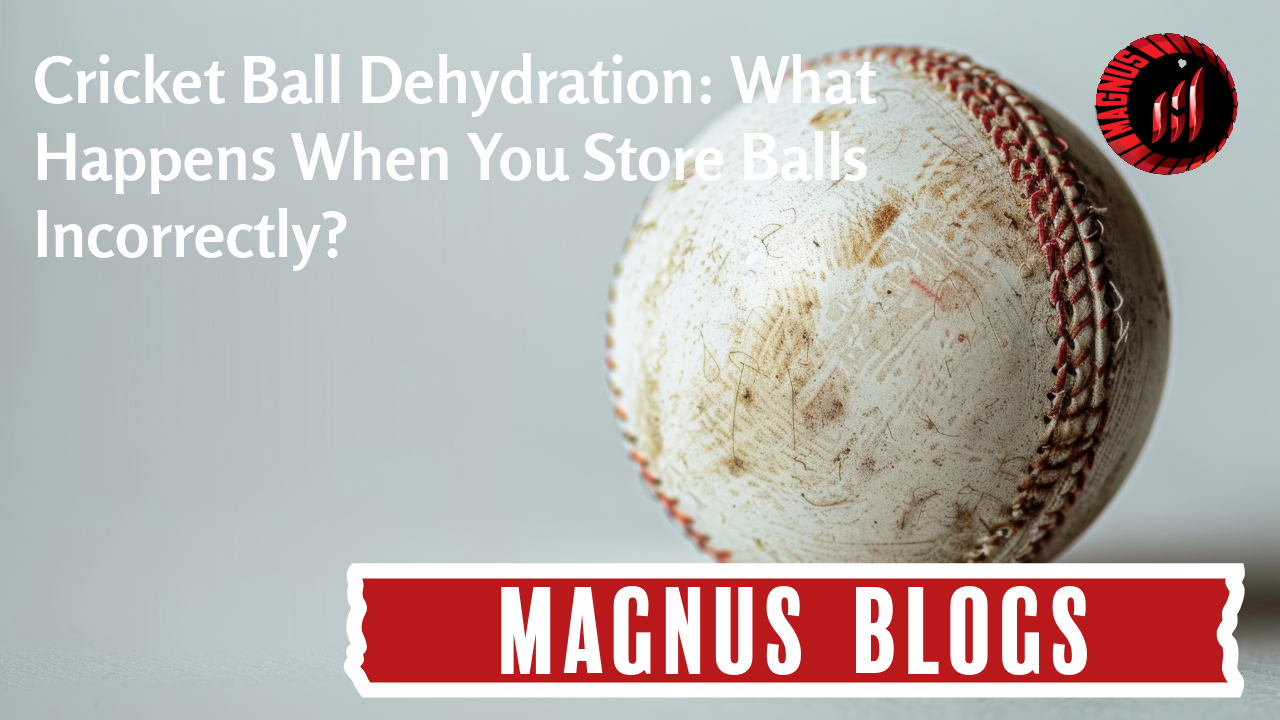Most cricketers know the importance of preserving their bats and protective gear, but cricket balls are often an afterthought. However, storing your cricket balls incorrectly can quietly ruin their performance, especially when it comes to moisture and dehydration. In this blog, we’ll break down what really happens to cricket balls when they’re not stored properly, and how dehydration affects swing, seam, and durability.
What Is Cricket Ball Dehydration?
Cricket balls, particularly those made from leather, are sensitive to their environment. They are stitched, polished, and pressed to meet specific standards. But when stored in overly dry or air-conditioned spaces, the leather can lose its natural moisture, leading to dehydration.
In simple terms, dehydration happens when the ball’s leather covering dries out, becoming brittle, stiff, and less elastic. And yes, this impacts your game more than you’d expect.
Effects of Dehydrated Cricket Balls
1. Loss of Swing and Seam Movement
A fresh, well-maintained cricket ball grips the air, allowing bowlers to swing it. Dehydration causes the leather to tighten and crack, affecting the aerodynamic profile of the ball. This can reduce both conventional and reverse swing, making the ball feel dead in the air.
2. Surface Cracks and Flaking
One of the most common signs of dehydration is the appearance of cracks on the surface or flaking polish. The leather loses its ability to hold the lacquer finish, resulting in uneven shine and a rough feel. Over time, this compromises both performance and the ball’s appearance.
3. Weakened Seam Structure
The seam is stitched into moist, pliable leather, which helps maintain shape and hardness. When the leather dehydrates, it pulls against the stitching, weakening the seam. This not only affects grip for bowlers but can cause premature seam breakdown during matches.
4. Inconsistent Bounce and Feel
The outer shell of the cricket ball contributes to the bounce and rebound off the pitch. Dehydrated balls tend to become harder but less responsive, resulting in flatter bounce, especially on dry or dusty wickets. Batters may notice the ball feels "dead" off the bat.
Common Storage Mistakes
Cricket balls are often stored without much thought. Here are some common mistakes that lead to dehydration:
-
Leaving balls in direct sunlight or inside hot car boots
-
Storing them in air-conditioned rooms with low humidity
-
Placing them in open baskets or mesh bags in dry environments
-
Using dehumidifiers or silica gel near where balls are stored
All of these can cause slow, gradual drying of the leather surface.
How to Properly Store Cricket Balls
To extend the life and performance of your balls, here are some simple best practices:
-
Keep them in a cool, shaded area with moderate humidity
-
Store in a closed box or cloth bag, not mesh or open-air containers
-
Place a damp cotton cloth nearby, but not touching the balls, to balance air moisture
-
Avoid long-term exposure to direct air from fans, heaters, or AC units
-
Occasionally apply leather conditioner or ball wax if you’re storing them long-term
If you live in a very dry region, it may also help to rotate the balls in storage, ensuring even air exposure.
Can You Rehydrate a Ball?
Once leather has dried and cracked, rehydration won’t fully restore its quality. You can apply conditioner to improve surface feel slightly, but performance will not return to original levels. Prevention is far better than a cure in this case.
Cricket bat types, Cricket equipment in usa, Cricket equipment store, Cricket gloves, Cricket helmet, Cricket kit bags, Cricket retailers, Durable cricket gloves, English willow bats, Icc approved helmets., Kashmir willow cricket bat, Latest kashmir willow bat
